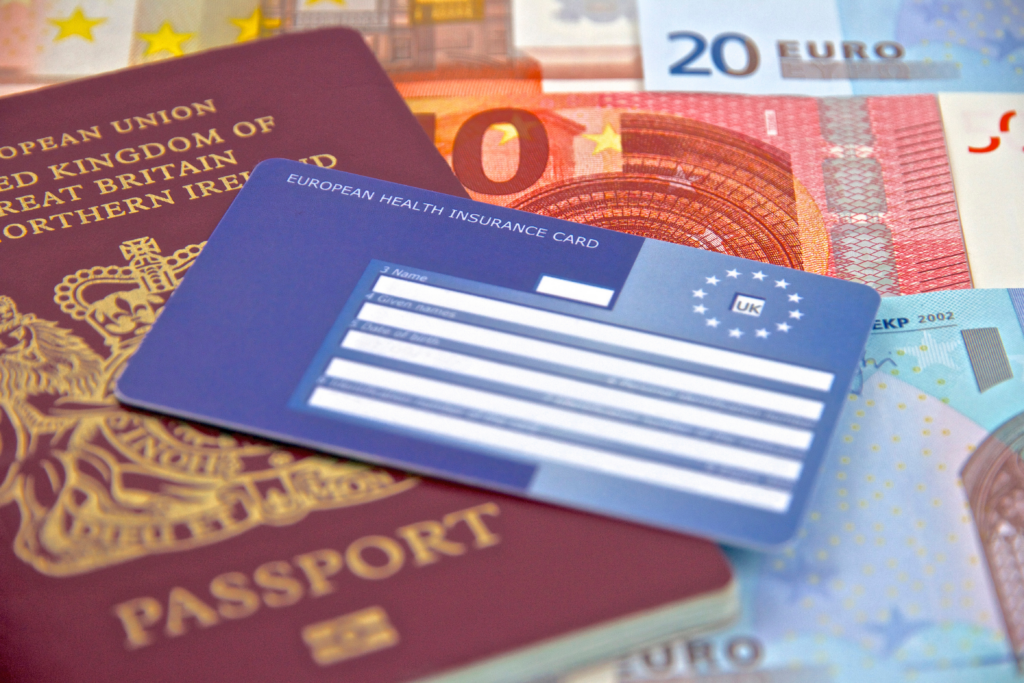
When planning a trip or studying abroad in the EU, many students rely on the European Health Insurance Card (EHIC) to access public healthcare. But what exactly does this free card cover? And more importantly, what doesn’t it cover?
What is the European Health Insurance Card (EHIC)?
The European Health Insurance Card allows citizens of EU countries to receive necessary healthcare when temporarily staying in another EU country, as well as in a few additional countries (like Norway, Liechtenstein, and Switzerland).
With the EHIC, you’re entitled to treatment under the same conditions and at the same cost as local residents, meaning, if a country has co-pays or partial reimbursement, so will you.
However, the EHIC is not a substitute for travel insurance. It doesn’t cover private healthcare, repatriation, or lost/stolen belongings. In some countries, it only reimburses a portion of the costs or requires you to pay upfront and claim it back later.
EHIC Card Coverage in Different European Countries
Even with a free EHIC, you may still have to pay fees upfront, cover partial costs, or wait for reimbursements, which is why many Erasmus students choose to supplement it with travel insurance.
Here’s a detailed list of European countries showing what the EHIC card covers for doctor visits, what kind of patient contributions (i.e., out-of-pocket costs) you might have to pay, and how the local healthcare system works for temporary visitors like Erasmus students.
Austria
- Doctors: You must visit doctors contracted with national health insurance.
- Patient Contribution: Yes. There’s a co-payment system and additional charges for certain services.
Belgium
- Doctors: Public healthcare providers accept EHIC.
- Patient Contribution: Yes. You typically pay upfront and are reimbursed a portion.
Bulgaria
- Doctors: Only visits to National Health Insurance Fund (NHIF) providers are covered.
- Patient Contribution: Yes. You pay a fixed fee per visit and may have co-pays.
Croatia
- Doctors: Must be within the Croatian Health Insurance Fund (HZZO) network.
- Patient Contribution: Yes. Some services require payment or partial reimbursement.
Cyprus
- Doctors: Only visits to contracted public doctors are covered.
- Patient Contribution: Yes. A fee is required per consultation.
Czech Republic
- Doctors: Must be affiliated with public health insurance companies.
- Patient Contribution: Yes. A standard fee per visit and some treatment costs apply.
Denmark
- Doctors: Covered if you use doctors in the public system.
- Patient Contribution: No for most treatments. Some dental and specialist services may not be covered.
Estonia
- Doctors: Public health providers are covered.
- Patient Contribution: Yes. A visit fee is often required.
Finland
- Doctors: EHIC covers visits to municipal health centres.
- Patient Contribution: Yes. Standard fees apply per consultation or service.
France
- Doctors: EHIC covers state-contracted providers.
- Patient Contribution: Yes. You pay upfront and claim up to 70% reimbursement.
Germany
- Doctors: Covered only if the doctor accepts public health insurance.
- Patient Contribution: Yes. Co-payments apply for prescriptions and treatments.
Greece
- Doctors: Use doctors affiliated with EOPYY (National Health Organization).
- Patient Contribution: Yes. Charges may apply depending on the service.
Hungary
- Doctors: Covered in the public system with an EHIC.
- Patient Contribution: Yes. You may need to pay some costs or fees.
Iceland
- Doctors: EHIC applies to public healthcare services.
- Patient Contribution: Yes. Flat-rate contributions required.
Ireland
- Doctors: Limited coverage. Emergency treatment covered; GP visits often not.
- Patient Contribution: Yes. GP visits usually require payment.
Italy
- Doctors: EHIC valid at public hospitals and with general practitioners (GPs).
- Patient Contribution: Yes. Some regions charge for GP visits and prescriptions.
Latvia
- Doctors: Covered when using public providers.
- Patient Contribution: Yes. Co-pays apply for many services.
Lithuania
- Doctors: Must use institutions under the Compulsory Health Insurance Fund.
- Patient Contribution: Yes. Co-payments are common.
Luxembourg
- Doctors: You pay upfront and request reimbursement from CNS (health fund).
- Patient Contribution: Yes. Partial reimbursement provided later.
Malta
- Doctors: Covered under the public system.
- Patient Contribution: No. Services are generally free with EHIC.
Netherlands
- Doctors: Limited to urgent care in public health system.
- Patient Contribution: Yes. Reimbursement only if you cannot reasonably delay care.
Norway
- Doctors: Covered for emergencies and necessary treatments.
- Patient Contribution: Yes. You must pay a portion of the cost.
Poland
- Doctors: Visit providers with contracts under the NFZ (public system).
- Patient Contribution: Yes. Co-pays may be required.
Portugal
- Doctors: State healthcare is available to EHIC holders.
- Patient Contribution: Yes. Fixed consultation fees apply.
Romania
- Doctors: EHIC accepted at public clinics and hospitals.
- Patient Contribution: Yes. Fees vary depending on service and provider.
Slovakia
- Doctors: Public providers accept EHIC.
- Patient Contribution: Yes. Nominal fees required for services.
Slovenia
- Doctors: Visit providers contracted with ZZZS (health insurance institute).
- Patient Contribution: Yes. Upfront payment often required.
Spain
- Doctors: Public healthcare is fully accessible with EHIC.
- Patient Contribution: No for most treatments. Some prescription co-pays apply.
Sweden
- Doctors: Public healthcare is covered.
- Patient Contribution: Yes. Flat-rate co-pay applies.
Switzerland
- Doctors: EHIC only valid for temporary stays; public providers only.
- Patient Contribution: Yes. Upfront payments may be needed.
Final Thoughts
The EHIC card is a valuable tool, but it’s not enough for Erasmus students. It doesn’t guarantee free or complete access to healthcare. Many European countries require partial or full payment upfront, and some only reimburse part of the cost, often weeks or even months later.
If you’re going on an Erasmus or any study abroad program and want to avoid unexpected bills and focus on enjoying your Erasmus experience, pairing your EHIC with a travel insurance made for students is the safest choice.
With OnCampus Abroad travel insurance, you’re covered for:
- Unlimited medical expenses
- Private healthcare and specialists
- Extended hospital stays
- Travel-related emergencies
- Repatriation to your home country
- Lost or stolen luggage or documents
Going abroad? Protect yourself beyond EHIC.
Learn more about OnCampus Abroad Student Travel Insurance.



